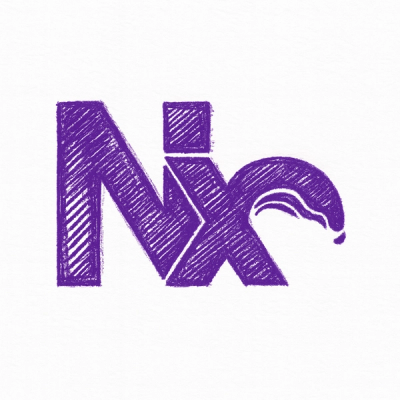
Research
Malicious npm Packages Impersonate Flashbots SDKs, Targeting Ethereum Wallet Credentials
Four npm packages disguised as cryptographic tools steal developer credentials and send them to attacker-controlled Telegram infrastructure.
elm-assets-loader
Advanced tools

webpack loader for webpackifying asset references in Elm.
$ npm install --save elm-assets-loader
elm-assets-loader is intended to be chained after elm-webpack-loader, and with a loader to load static assets like file-loader or url-loader. elm-asset-path is a companion Elm package that provides types and functions for working with asset paths.
Suppose we have a union type for tagging asset paths:
module My.Assets exposing (AssetPath(..))
type AssetPath
= AssetPath String
star =
AssetPath "star.png"
Tell elm-assets-loader to look for strings tagged with AssetPath:
rules: [
{
test: /\.elm$/,
exclude: [/elm-stuff/, /node_modules/],
use: [
{
loader: 'elm-assets-loader',
options: {
module: 'My.Assets',
tagger: 'AssetPath'
}
},
'elm-webpack-loader'
]
},
{
test: /\.(jpe?g|png|gif|svg)$/i,
loader: 'file-loader',
options: {
name: '[name]-[hash].[ext]'
}
}
]
Then at runtime, the value of My.Assets.star will be something like
AssetPath "star-038a1253d7a9e4682deb72cd68c3a328.png".
To actually use this string value, define a helper like so:
-- say, in My.Assets
path : AssetPath -> String
path (AssetPath str) =
str
Usage example:
viewStar : Html Msg
viewStar =
img [ src <| My.Assets.path <| My.Assets.star ] []
elm-asset-path includes a reference
implementation of this AssetPath type with support for resolving to a URL on a CDN.
"AssetPath"<tagger> String that's used to tag asset paths in your code."My.Assets""user/project""NoRedInk/myapp"elm-package.json.
"repository": "https://github.com/user/project.git" -> package should be "user/project""repository": "https://github.com/NoRedInk/myapp.git" -> package should be "NoRedInk/myapp"Default: "warn"
Possible values: "error" | "warn" | "ok"
What to do with dynamically constructed asset paths.
Dynamic requires is not supported. This option simply controls whether or not to raise an error or skip over expressions like:
example iconName =
AssetPath ("icon-" ++ iconName ++ ".png")
Function to transform tagged strings to a path that can be resolved by webpack. For example, you may want to tag URL paths, which may not be resolvable to a filesystem path, so that your code works without being webpacked.
star = AssetPath "/public/images/star.png"
img [ src (toUrl star) ] []
webpack config (for webpack 2):
module.exports = {
...
module: {
rules: [
{
test: /\.elm$/,
use: [
{
loader: 'elm-assets-loader',
options: {
localPath: function(url) {
// transform `url` to a local path that resolves to a file
return url.replace(/^\/public\//, "");
}
}
},
'elm-webpack-loader?cwd=' + fixturesPath + '&pathToMake=' + elmMakePath
]
},
{
test: /\.svg$/,
use: {
loader: 'file-loader',
options: {
publicPath: function(path) {
// transform `path` to a URL that the web server can understand and serve
return "/public/" + url;
}
}
}
}
}
}
}
Don't set noParse on .elm files. Otherwise, requires won't be processed.
Let's walk through what happens to the example above when processed by webpack.
This Elm code:
AssetPath "star.png"
will be compiled to JavaScript by elm-webpack-loader:
_user$project$My_Assets$AssetPath("star.png")
elm-assets-loader turns this into:
_user$project$My_Assets$AssetPath(require("star.png"))
webpack parses this require call, determines it to be a file-loader module, resulting in:
_user$project$My_Assets$AssetPath(__webpack_require__(30))
The module loaded by __webpack_require__(30) will look like:
30:
function(module, exports) {
module.exports = "star-038a1253d7a9e4682deb72cd68c3a328.png";
}
Which means, effectively, the JavaScript code we saw originally has been rewritten as:
_user$project$My_Assets$AssetPath("star-038a1253d7a9e4682deb72cd68c3a328.png")
See .travis.yml to see supported combinations of the Elm Compiler & Webpack.
FAQs
webpack loader for webpackifying asset references in Elm code
The npm package elm-assets-loader receives a total of 5 weekly downloads. As such, elm-assets-loader popularity was classified as not popular.
We found that elm-assets-loader demonstrated a not healthy version release cadence and project activity because the last version was released a year ago. It has 4 open source maintainers collaborating on the project.
Did you know?

Socket for GitHub automatically highlights issues in each pull request and monitors the health of all your open source dependencies. Discover the contents of your packages and block harmful activity before you install or update your dependencies.

Research
Four npm packages disguised as cryptographic tools steal developer credentials and send them to attacker-controlled Telegram infrastructure.

Security News
Ruby maintainers from Bundler and rbenv teams are building rv to bring Python uv's speed and unified tooling approach to Ruby development.

Security News
Following last week’s supply chain attack, Nx published findings on the GitHub Actions exploit and moved npm publishing to Trusted Publishers.